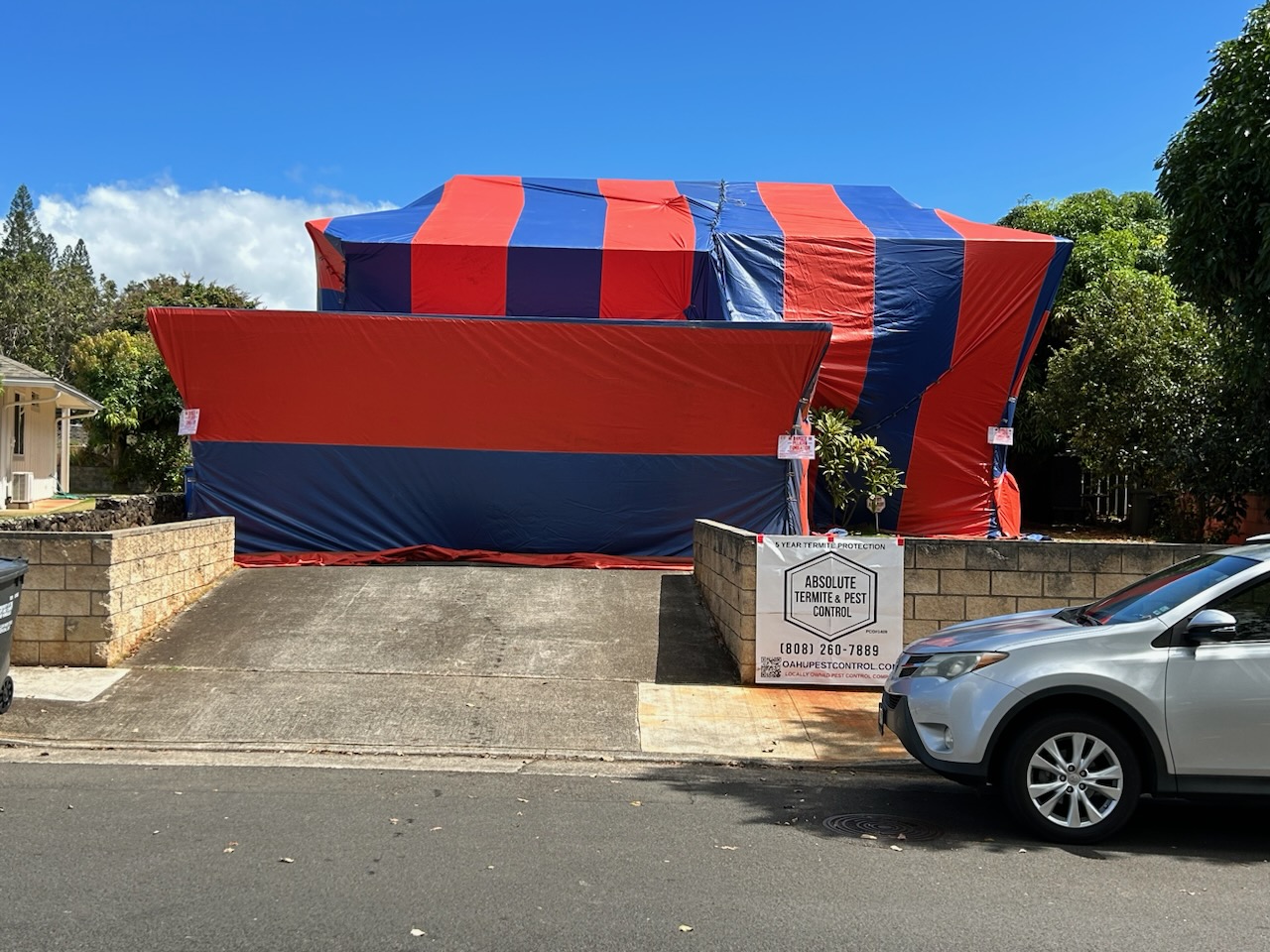Understanding the Importance of Pest Control to Prevent Brown Tree Ant Infestations in Hawaii
- Absolute Pest Control Hawaii PCO#1409
- 2 days ago
- 3 min read
Updated: 1 day ago
Hawaii is renowned for its lush landscapes and diverse wildlife, but not every creature is welcome in our homes. The brown tree ant, recognized scientifically as Pheidole megacephala, is one of those unwelcome guests. This invasive species threatens both local ecosystems and our comfort at home. By understanding the behaviors and patterns of these ants, homeowners can take steps to prevent infestations.
The Brown Tree Ant: An Overview
The brown tree ant is a small ant that measures approximately 2 to 5 mm in length, featuring distinctive reddish-brown colors. Originally hailing from the South Pacific, this species has made Hawaii its home, where it disrupts local ecosystems. Brown tree ants are known for their aggressive nature and their capacity to form large colonies—sometimes numbering in the thousands—making their presence in residential areas particularly troublesome.
The Risks of Infestation
Once brown tree ants invade a home, they can create chaos. They often build nests in walls, ceilings, and appliances, leading to damage and potential food contamination. For instance, a survey from the University of Hawaii found that over 65% of homes with brown tree ants reported instances of food spoilage due to contamination. Their painful bites can trigger allergic reactions in sensitive individuals, posing health risks. Ignoring a brown tree ant infestation not only invites health issues but can also lead to expensive repairs.
Why Pest Control is Crucial
Implementing effective pest control is essential for preventing brown tree ant infestations. Here are key reasons to consider professional pest management services:
Prevention of Infestation
Taking a proactive approach to pest control can save you time and money. Research indicates that early detection and treatment can reduce infestation costs by 50%. Regular inspections and preventative treatments establish a barrier, limiting the chances of an ant invasion.
Protection of Property
Brown tree ants have a knack for nesting in electrical equipment and appliances, which can create fire hazards. The National Fire Protection Association has reported that poorly maintained electrical systems are a leading cause of house fires, further emphasizing the need for effective pest control. Investing in pest management helps protect your property and ensures the safety of your living environment.
Health Considerations
Ants can harbor bacteria that contaminate food and surfaces in your kitchen. Research shows that 98% of ants can carry pathogens, which is concerning for household hygiene. Their relentless presence can also disturb your peace at home. Pest control services are vital for maintaining not only cleanliness but also overall health in your household.
Signs of a Brown Tree Ant Infestation
To take action against a potential infestation early, be vigilant for these signs of their presence:
Ant Trails: Observe small lines of ants entering and exiting your home, which may indicate a nearby nesting site.
Nests: Search for nests in wall voids, tree crevices, or hidden spaces that provide shelter from light.
Bites: If you experience painful bites while interacting with ants, it's a clear sign that an infestation is present.
DIY vs. Professional Pest Control
While some DIY solutions might provide temporary relief, they often fail to tackle the root cause of infestations. This can lead to recurring ant problems. Professional pest control services offer targeted treatments and preventive measures that effectively eliminate brown tree ants and ensure long-term solutions.
Understanding Treatment Options
When you hire a pest control expert, they will assess your property to identify entry points and recommend appropriate treatment plans. These often include bait stations and targeted sprays that specifically address the infested areas without compromising safety. For instance, eco-friendly solutions can reduce both health risks and environmental impact.
Best Practices for Pest Prevention
To further prevent future infestations, follow these effective practices:
Seal Entry Points: Close gaps and cracks around windows, doors, and foundations to block ants from entering your home.
Keep Food Sealed: Store food in airtight containers to prevent ants from foraging indoors.
Maintain Cleanliness: Regularly clean surfaces, especially kitchens, to remove food particles that attract ants.
Trim Vegetation: Keep landscaping well-maintained, as overgrown plants can harbor nests close to your home.
The Role of Local Ecosystems
While brown tree ants pose a problem for homeowners, they also disrupt local ecosystems by outcompeting native species for resources like food and shelter. As of 2023, approximately 40% of Hawaii’s native ants have seen population declines due to invasive species. Addressing ant infestations helps safeguard not only your home but also Hawaii's rich biodiversity.
Protect Your Home and Community
In summary, dealing with brown tree ant infestations is crucial for homeowners in Hawaii. These aggressive invaders can threaten health and safety, making proactive pest control necessary. By recognizing the early signs of infestation and implementing solid preventive measures, you can protect your family, home, and the unique environment of Hawaii. Prioritizing effective pest control supports both your well-being and the delicate balance of local ecosystems. Taking action against brown tree ants is essential for creating a safe, pest-free environment in your home.












Comments